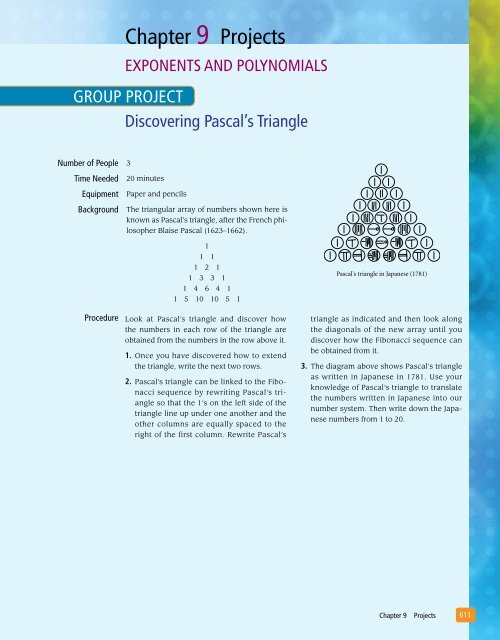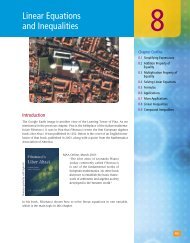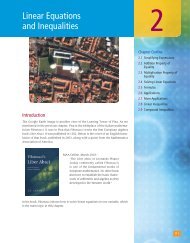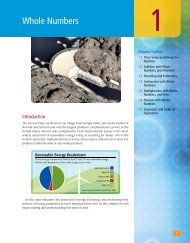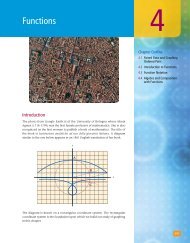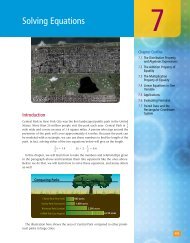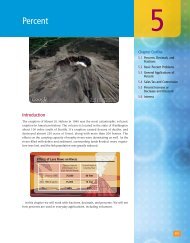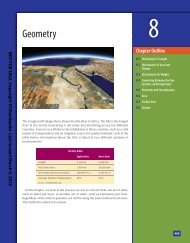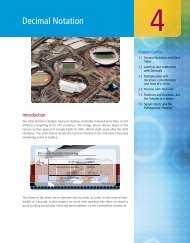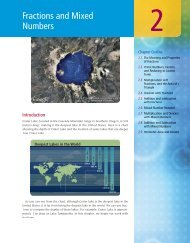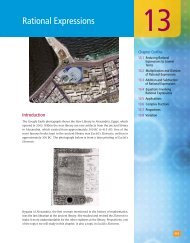Exponents and Polynomials - XYZ Custom Plus
Exponents and Polynomials - XYZ Custom Plus
Exponents and Polynomials - XYZ Custom Plus
- No tags were found...
You also want an ePaper? Increase the reach of your titles
YUMPU automatically turns print PDFs into web optimized ePapers that Google loves.
Chapter 9 Projects<strong>Exponents</strong> <strong>and</strong> <strong>Polynomials</strong>group PROJECTDiscovering Pascal’s TriangleNumber of PeopleTime NeededEquipmentBackground320 minutesPaper <strong>and</strong> pencilsThe triangular array of numbers shown here isknown as Pascal’s triangle, after the French philosopherBlaise Pascal (1623–1662).Procedure11 11 2 11 3 3 11 4 6 4 11 5 10 10 5 1Look at Pascal’s triangle <strong>and</strong> discover howthe numbers in each row of the triangle areobtained from the numbers in the row above it.1. Once you have discovered how to extendthe triangle, write the next two rows.2. Pascal’s triangle can be linked to the Fibonaccisequence by rewriting Pascal’s triangleso that the 1’s on the left side of thetriangle line up under one another <strong>and</strong> theother columns are equally spaced to theright of the first column. Rewrite Pascal’sPascal's triangle in Japanese (1781)triangle as indicated <strong>and</strong> then look alongthe diagonals of the new array until youdiscover how the Fibonacci sequence canbe obtained from it.3. The diagram above shows Pascal’s triangleas written in Japanese in 1781. Use yourknowledge of Pascal’s triangle to translatethe numbers written in Japanese into ournumber system. Then write down the Japanesenumbers from 1 to 20.Chapter 9Projects611


